Extraction and Characterization of Moringa Seed Oil Results from Soxhletation and Screw Pressing
DOI:
10.29303/jpm.v20i1.8245Published:
2025-01-30Issue:
Vol. 20 No. 1 (2025)Keywords:
Moringa Seed Oil; Screw Pressing; SoxhletationArticles
Downloads
How to Cite
Downloads
Metrics
Abstract
Moringa seed oil is a vegetable oil that has many benefits for health and the pharmaceutical industry. Moringa seed oil can be extracted either chemically or mechanically. This research aims to characterize moringa seed oil’s physicochemical properties and fatty acid composition using soxhletation chemical extraction and screw-pressing mechanical extraction with various pretreatment temperatures of 50, 60, and 70°C. The research showed that the highest yield of moringa seed oil, 41.74%, was obtained at an initial treatment temperature of 70°C using the soxhletation method for 6 hours. The acid value of moringa seed oil from soxhletation is 2.01 mg KOH/g, and screw pressing is 4.37 mg KOH/g. The iodine number from soxhletation was 66.62 mg iod/100g, and screw pressing was 60.27 mg iod/100g. The density of the oil from soxhletation and screw pressing is 0.922 mg/mL and 0.934 mg/mL, respectively, with an oil viscosity of 3.298 cP and 3.424 cP. The results of GC-MS analysis show that moringa seed oil from soxhletation has an oleic acid composition of 40.92%, while the screw pressing has an oleic acid composition of 22.50%. This finding demonstrates the influence of extraction methods on the fatty acid profile, particularly the concentration of oleic acid, a key component of moringa seed oil. These results contribute to understanding how specific extraction techniques can optimize the quality of moringa seed oil.
References
S. Aminah, T. Ramdhan and M. Yanis, "Kandungan Nutrisi dan Sifat Fungsional Tanaman Kelor ( Moringa oleifera)," Buletin Pertanian Perkotaan, vol. 5, no. 2, pp. 35-44, 2015.
M. L. Trisnawati and C. N. Fithri, "Pengaruh penambahan konsentrat protein daun kelor dan karagenan terhadap terhadap kualitas mie kering tersubtitusi mocaf," Jurnal Pangan dan Agroindustri, vol. 3, no. 1, pp. 237-247, 2015.
F. Anwar and U. Rashid, "hysico Chemical Characteristics of Moringa Oleifera Seeds and Seed Oil from A Wild Provenance of Pakistan," Pakistan Journal of Botany, vol. 39, no. 5, pp. 1443-1453, 2007.
Y. Salimi., N. Ischak. and Y. Ibrahim, "Karakterisasi Asam Lemak Hasil Hidrolisis aada Minyak Biji Kelor (Moringa Oleifera) dengan Metode Kromatografi Gas-Spektroskopi Massa," Jambura Journal of Chemistry, vol. 1, no. 1, pp. 6-14, 2019. doi: https://doi.org/10.34312/jambchem.v1i1.2101
Y. Priyanto, W. Christijanti, Lisdiana and A. Marianti, "Aktivitas Antioksidan Daun Kelor (Moringa oleifera) pada tikus Diabetik Induksi Aloksan," Life Science, vol. 12, no. 1, 2023.
A. Bukar, A. Uba and T. Oyeyi, "Antimicrobial Profile of Moringa Oleifera Lam. Extracts Against Some Food – Borne Microorganisms," Bayero Journal of Pure and Applied Sciences, vol. 3, no. 1, pp. 43-48, 2010. doi: https://doi.org/10.4314/bajopas.v3i1.58706
H. Barakat and G. A. Ghazal, "Physichochemical Properties of Moringa Oleifera Seeds and Their Edible Oil Cultivated At Diffferent Regions in Egypt," Food And Nutrition Sciences, vol. 7, no. 6, pp. 472-484, 2016. doi: https://doi.org/10.4236/fns.2016.76049
F. Ashraf and S. Gilani, "Fatty Acid in Moringa oleiferia Oil," Journal of The Chemical Society of Pakistan, vol. 29, no. 4, pp. 343-345, 2007.
M. Dzakwan, W. Priyanto and D. Ekowati, "Nanoenkapsulasi Minyak Biji Kelor," Jurnal Ilmiah Farmasi Farmasyifa, vol. 2, no. 2, p. 84–92, 2019. doi: https://doi.org/10.29313/jiff.v2i2.4660
M. Nadeem and M. Imran, "Promising Features of Moringa Oleifera Oil: Recent Updates and Perspective," Lipids in Health and Disease, vol. 5, no. 1, pp. 1-8, 2016. doi: https://doi.org/10.1186/s12944-016-0379-0
Sudaryanto, T. Herwanto and S. H. Putri, "Aktivitas Antioksidan pada Minyak Biji Kelor (Moringa Oleifera L.) dengan Metode Sokletasi Menggunakan pelarut N-Heksan, Metanol Dan Etanol," Jurnal Teknotan, vol. 10, no. 2, pp. 16-21, 2016. doi: https://doi.org/10.24198/jt.vol10n2.3
M. R., G. R., M. O., P. R. Bouzas, J. A. Rufian-Henares, M. Mesias and C. Cabrera-Vique, "Determination of Polyphenols, Tocopherols, and Antioxidant Capacity in Virgin Argan Oil (Argania spinosa, Skeels)," European Journal Lipid Science Technology, vol. 11, no. 7, pp. 886-893, 2011. doi: https://doi.org/10.1002/ejlt.201000503
H. Nurhasnawati, S. Sukarmi and F. Handayani, "Perbandingan metode ekstraksi maserasi dan sokletasi terhadap aktivitas antioksidan ekstrak etanol daun jambu bol (Syzygium malaccense L.)," Jurnal Ilmiah Manuntung, vol. 3, no. 1, p. 91–95, 2017. doi: https://doi.org/10.51352/jim.v3i1.96
T. Hasballah, Siahaan and E. W.B., "Pengaruh Tekanan Screw Press Pada Proses Pengepresan Daging Buah Menjadi Crude Palm Oil," Jurnal Darma Agung, vol. 26, no. 3, pp. 722-729, 2018.
M. Bhuiyaa, M. Rasul, M. Khan, N. Ashwath and M. Rahman, "Comparison of Oil Extraction between Screw Press and Solvent (N-Hexane) Extraction Technique from Beauty Leaf (Calophyllum inophyllum L.) Feedstock," Industrial Crops & Products, vol. 144, 2020. doi: https://doi.org/10.1016/j.indcrop.2019.112024
A. Kojic, M. Planinić, T. S., S. Jokic, I. O. Mujic, M. Bilic and D. Velić, "Effect of extraction conditions on the extractability of phenolic compounds from lyophilised fig fruits (Ficus carcia L)," Journal Food Nutrition Science, vol. 61, no. 3, pp. 195-199, 2011. doi: https://doi.org/10.2478/v10222-011-0021-9
E. R. Gunawan, S. S. Handayani, L. Kurniawati, D. Suhendra and Nurhidayanti, "Profil Kandungan Asam Lemak Tak Jenuh pada Ekstrak Minyak Ikan Lele (Clarias sp) Hasil Reaksi Esterifikasi dan Transesterifikasi secara Enzimatis," Chem. Prog., vol. 7, no. 2, pp. 88-95, 2014.
A. Mulyakandya, B. Susilo and N. Komar, "Studi Ekstraksi Bertingkat Minyak Jarak Pagar (Jatropha curcas L.) dengan Menggunakan Mesin Pres Ulir," Jurnal Bioproses Komoditas Tropis, vol. 1, no. 2, pp. 40-47, 2013.
S. S. Handayani, E. R. Gunawan, D. Suhendra, Murniati, D. Hermanto and I. M. Aditha, "Karakterisasi Sifat Fisiko Kimia Minyak Nyamplung Sebagai Bahan Baku Sabun Padat Transparan," Jurnal Pijar MIPA, vol. 15, no. 4, pp. 411-415, 2020. doi: https://doi.org/10.29303/jpm.v15i4.1328
N. A. Widyanastuti and B. Susilo, "Studi Ekstraksi Hydraulic Press Minyak Biji Kelor (Moringa oleifera) dengan Variasi Perlakuan Panas," Jurnal Bioproses Komoditas Tropis, vol. 1, no. 2, pp. 48-55, 2013.
S. S. Handayani, E. R. Gunawan, D. Suhendra, Murniati, D. Hermanto and L. Karniela, "Utilization of Fatty Acids in Moringa Seed Oil as A Basic Material for Making Azelaic Acid," Jurnal Penelitian Pendidikan IPA, vol. 8, no. 5, pp. 2319-2323, 2022. doi: https://doi.org/10.29303/jppipa.v8i5.1964
S. Nasir, D. F. Soraya and D. Pratiwi, "Pemanfaatan Ekstrak Biji Kelor (Moringa oleifera) untuk Pembuatan Bahan Bakar Nabati," Jurnal Teknik Kimia, vol. 17, no. 3, pp. 29-34, 2010.
A. Hakim. and E. Mukhtadi., "Pembuatan Minyak Biji Karet dari Biji Karet dengan Menggunakan Metode Screw Pressing: Analisis Produk Penghitungan Rendemen, Penentuan Kadar Air Minyak, Analisa Densitas, Analisa Viskositas, Analisa Angka Asam Dan Analisa Angka Penyabunan," Metana, vol. 3, no. 1, pp. 13-22, 2017. doi: https://doi.org/10.14710/metana.v13i1.9745
D. Setyawardhani, S. Distantina, R. Budiyanto and W. Swarte, "Penggeseran Reaksi Kesetimbangan Hidrolisis Minyak Dengan Pengambilan Gliserol untuk Memperoleh Asam Lemak Jenuh dari Minyak Biji Karet," Ekuilibrium, vol. 12, no. 2, pp. 63-67, 2013. doi: https://doi.org/10.20961/ekuilibrium.v12i2.2188
K. Nafisah and I. Fajriati, "Optimasi Ekstraksi Padat Cair Dalam Penentuan Asam Lemak Omega-3 Minyak Ikan Bawal ( Colossoma Macropomum ) Dengan Kromatografi Gas ( KG )," Indonesian Journal Of Halal Science, vol. 1, no. 2, pp. 60-65, 2020.
B. N. Singh, B. R. Singh, R. L. Singh, D. Prakash, R. Dhakarey, G. Upadhyay and H. B. Singh, "Oxidative DNA Damage Protective Activity, Antioxidant and Anti-Quorum Sensing Potentials of Moringa Oleifera," Food and Chemical Toxicology, vol. 47, no. 6, pp. 1109-1116, 2009. doi: https://doi.org/10.1016/j.fct.2009.01.034
Murniati, E. R. Gunawan, D. Suhendra, D. Asnawati and P. Qurba, "Sintesis Asam-Asam Lemak Amida dari Ekstrak Minyak Inti Buah Nyamplung (Calophyllum inophyllum) melalui Reaksi Enzimatik," Jurnal Riset Kimia, vol. 3, no. 1, pp. 88-97, 2022.
L. Maulinda, Z. Nasrul and Nurbaity, "Hidrolisis Asam Lemak dari Buah Sawit Sisa Sortiran," Jurnal Teknologi Kimia Unimal, vol. 6, no. 2, pp. 1-15, 2017. doi: https://doi.org/10.29103/jtku.v6i2.471
S. M. Karim, K. Long, O. Lai, S. K. S. Muhammad and H. Ghazali, "Some Physico-Chemical Properties of Moringa Oleifera Seed Oil Extracted using Solvent and Aqueous Enzymatic Methods," Food Chemistry, vol. 93, no. 2, p. 253–263, 2005. doi: https://doi.org/10.1016/j.foodchem.2004.09.023
M. I. F. Gunawan, E. Prangdimurti and T. Muhandri, "Upaya Penghilangan Rasa Pahit Tepung Biji Kelor (Moringa oleifera) dan Aplikasinya untuk Pangan Fungsional," Jurnal Ilmu Pertanian Indonesia (JIPI), vol. 25, no. 4, pp. 636-643, 2020. doi: https://doi.org/10.18343/jipi.25.4.636
J. Dising and P. Pasau, "arakteristik Fisikokimia Minyak Biji Kelor (Moringa oleivera L.)," Politanikoe, vol. 1, pp. 1491-1500, 2021. doi: https://doi.org/10.35726/jp.v26i1.479
G. Baskar, G. Kalavathy, R. Aiswarya and B. Selvakumari, "Advances in Bio Oil Extraction from Nonedible Oil Seeds and Algal Biomass," in Woodhead Publishing Series in Energy, Chennai, Woodhead Publishing, 2019, pp. 187-210.doi: https://doi.org/10.1016/B978-0-08-102728-8.00007-3
H. Alkaf and Nurlela, "Analisa Bilangan Peroksida Terhadap Kualitas Minyak Goreng Sebelum dan Sesudah Dipakai Berulang," Jurnal Redoks, vol. 5, no. 1, p. 65–71, 2020. doi: https://doi.org/10.31851/redoks.v5i1.4129
Ika Amalia Kartika , Ikbal Fataya , Muhamad Yunus , Nancy Dewi Yuliana. Optimization Of Calophyllum Oil And Resin Extration Process With Binary Solvent Using Response Surface Method. Jurnal Teknologi Industri LPertanian 32 (1): 21-31, 2022
SNI 01-3555-1998 Standar Nasional Indonesia, 1998
A.O.A.C Official methods of analysis. Association of Official Analytical Chemists,2005
Author Biographies
Sri Seno Handayani, Universitas Mataram
Erin Ryantin Gunawan, Chemistry Department, Faculty of Mathematics and Natural Sciences, University of Mataram
Dedy Suhendra, Chemistry Department, Faculty of Mathematics and Natural Sciences, University of Mataram
Murniati Murniati, Chemistry Department, Faculty of Mathematics and Natural Sciences, University of Mataram
Rizka Dhia Khalilah Bali, Department of Chemistry, Faculty of Mathematics and Natural Sciences, University of Mataram
Gita Sagita Sari, Department of Chemistry, Faculty of Mathematics and Natural Sciences, University of Mataram
License
Copyright (c) 2025 Sri Seno Handayani, Erin Ryantin Gunawan, Dedy Suhendra, Murniati Murniati, Rizka Dhia Khalilah Bali, Gita Sagita Sari

This work is licensed under a Creative Commons Attribution 4.0 International License.
The following terms apply to authors who publish in this journal:
1. Authors retain copyright and grant the journal first publication rights, with the work simultaneously licensed under a Creative Commons Attribution License 4.0 International License (CC-BY License) that allows others to share the work with an acknowledgment of the work's authorship and first publication in this journal.
2. Authors may enter into separate, additional contractual arrangements for the non-exclusive distribution of the journal's published version of the work (e.g., posting it to an institutional repository or publishing it in a book), acknowledging its initial publication in this journal.
3. Before and during the submission process, authors are permitted and encouraged to post their work online (e.g., in institutional repositories or on their website), as this can lead to productive exchanges as well as earlier and greater citation of published work (See The Effect of Open Access).











